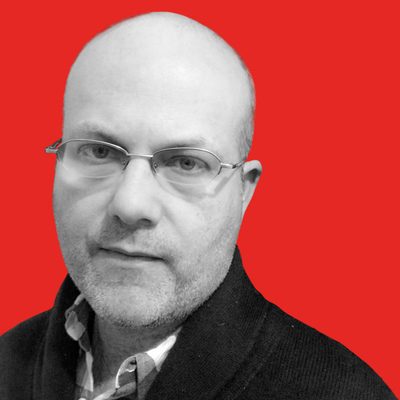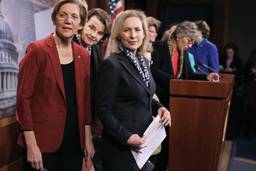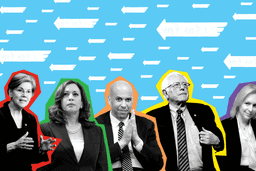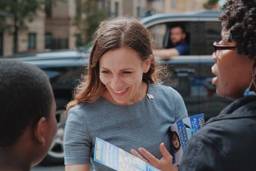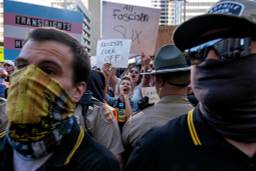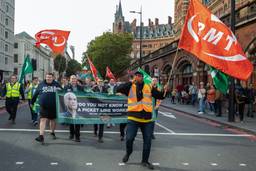Tending Dixie’s Racial Wounds
Does a story-sharing program offer a chance at Southern reconciliation?
Theo Anderson

Rachel Dangermound is a Sephardic Jew who lives in New Orleans. Her adopted son, Constantin, is African-American. He’s only 5, but already, she says, “I think about how young black men are looked at. I think about how [perceptions of him] might change when he’s 16.”
Out of concern for her son’s future, last spring she began participating in a program called the Welcome Table. An initiative of the William Winter Institute for Racial Reconciliation, the Welcome Table is devoted to the idea that storytelling can be a critical tool for combating racism. Charles Tucker, the Institute’s associate director, says the philosophy is summed up by something an elderly African American once told him: “You want to do something to make a difference? Tell my story. Nobody knows my story. Nobody cares.”
Tucker says there are at least 15 active Welcome Table groups in Mississippi and four in New Orleans, where the program expanded last spring with the help of a $1.2 million grant from the W. W. Kellogg Foundation.
As the site of some of the greatest hopes and tragedies of the civil rights movement, Mississippi is an especially charged environment for an experiment in racial dialogue. Last year marked the 50th anniversary of the Freedom Summer, when civil rights organizations mounted a massive voter-registration drive in the state — and faced furious resistance. In June 1964, three participants in the drive were murdered: Andrew Goodman and Michael Schwerner, both white, and James Chaney, an African American. It wasn’t until 2005 that the killer, Edgar Ray Killen, was convicted. Killen was brought to justice partially through the efforts of a group called the Philadelphia Coalition, which became a key inspiration for the Welcome Table.
The Coalition, named after the small Mississippi town where the murders occurred, was founded in the early 2000s as Philadelphia was approaching the 40th anniversary of the crime and looking for a way to reform its racist image. With that as its mission, the Coalition began with several weeks of relationship-building. From there, the members moved on to the goal of bringing Killen to justice, and successfully pressured state officials to reopen the case.
The Winter Institute assisted the Philadelphia Coalition throughout this; the Institute’s Tucker calls the Coalition “the first real test and genesis of what is now the Welcome Table process.”
Welcome Table groups begin with a year-long phase of storytelling. The participants meet each month for an hour, sitting in a circle and sharing what they care to. Attendance ranges from a handful of people to about 30. Members agree to abide by nine “guideposts,” including being open, listening deeply and speaking truthfully.
“By sharing their experiences, they discover a sense of unity,” says Jacqueline Byrd Martin, who serves as a facilitator for Welcome Table meetings.
After the initial relationship-building phase, groups often choose a project to pursue. Martin says that this, rather than dialogue about race, is the primary draw of the Welcome Table groups for many. “When people come to these meetings, they’re interested in changing their community. [The thinking is that] the more relationships I build, the more I can get out there and do.”
The Mississippi Collaborative, a coalition of economic justice groups located in the Gulf Coast, convened a Welcome Table in April 2014 as part of the group’s work on racial and environmental justice in the wake of the 2010 Deepwater Horizon oil spill. Roberta Avila, a member of the collaborative, explains that the multilingual process lifted up the voices of Vietnamese-American fisher-folk whose livelihoods were devastated by the spill. It also helped build trust between impacted communities and the policymakers involved in Gulf Coast restoration efforts, says Avila, who is Mexican-American.
In the northeastern Mississippi town of West Point, meanwhile, a two-year old group is focusing on improving local public education, in large part because many of the members are active or retired educators — and “we have a high dropout rate in our school system,” says Robbie Robinson, the mayor of West Point and a Welcome Table participant. Education Week recently named Mississippi’s schools the worst in the nation.
Mayor Robinson, who is white, says the process has created a racially diverse coalition of about 20 people who feel more invested in the community and its schools, and the group has established a tutoring program for students struggling with reading comprehension.
Not everyone is impressed or persuaded by the organization’s approach. When New Orleans’ Democratic mayor, Mitch Landrieu, invited the program to the city, critics said that talk is cheap. The focus on dialogue and relationship building, they say, allows white people to avoid hard truths about economic inequalities and structural racism.
“An honest examination would surely reveal that a … million dollars and a few kumbaya moments are not nearly enough to tackle the real problems that result from the policies and practices that perpetuate and exacerbate racism,” wrote Anitra Brown in the New Orleans Tribune, the city’s African-American newspaper, this spring.
Tucker agrees that dialogue isn’t enough. But he believes that “talking opens the door” to real progress.
“People say, ‘All they’re doing is talking,’ Tucker says. “But if you’re going into business with someone, would you do it without ever talking to them? We open up those channels of conversation and from there move into either business relationships or policy relationships.”
The Welcome Table’s goal of bridging racial divides through dialogue has seemed especially relevant given the highly publicized incidents of violence against black men. After the announcements last fall that the police officers who killed Michael Brown and Eric Garner would not be indicted, for example, there was a special Welcome Table forum in New Orleans. “It was,” says Dangermond, “a healing room — a safe place for everyone to speak out about their frustration and sadness and anger.”
Dangermond, who is now training to be a Welcome Table facilitator, believes that the program isn’t a solution in itself, but it is “definitely a starting point” and a relevant model for other communities.
“Being a single [white] mother of a son who’s black — it felt very daunting,” she says. “To see something like this happen in my city gives me confidence that there continues to be resistance [to racism]. We’re not marching to Selma. But we’re doing it in a different way.”

